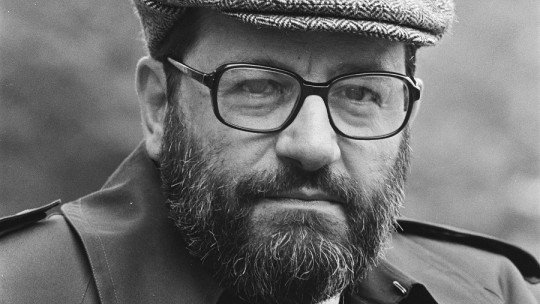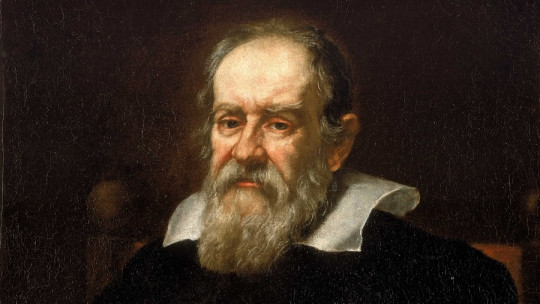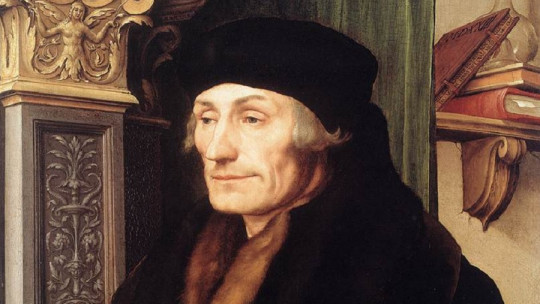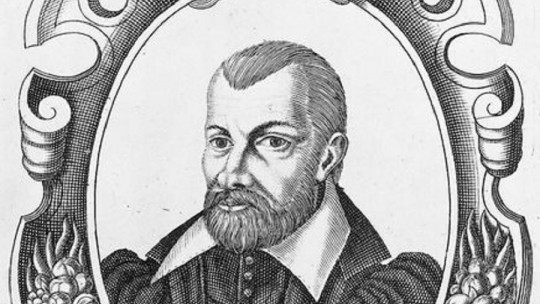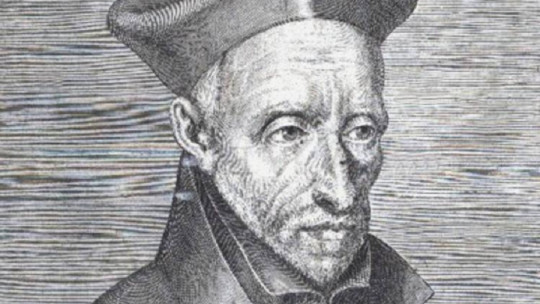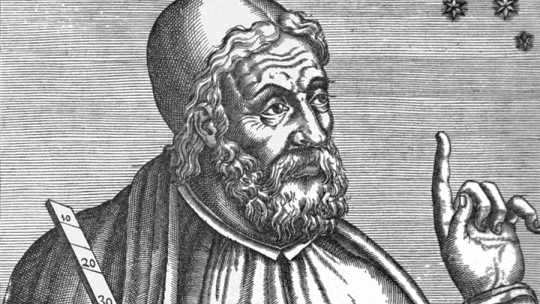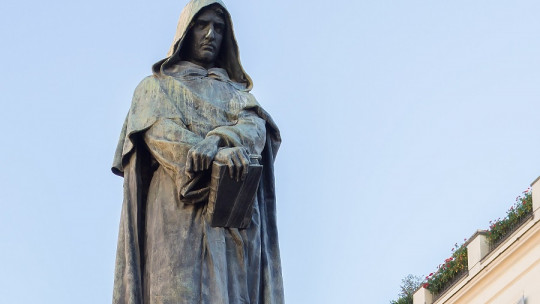
Giordano Bruno was a man of great knowledge and a wandering life due to his convictions and theories about religion, physics and astronomy. He was born in Renaissance Italy, but had the opportunity to visit France, England, the Holy Empire and Switzerland, meeting great people and arguing with them on more than one occasion.
Persecuted practically all his life for being contrary to the religious dogmatisms of his time, there was no place that became his habitual residence. He was a professor at several universities, sometimes expelled from them, having a very busy and turbulent life.
His final destiny was tragic, which, contrary to what both Catholics and Protestants believed, ended up being executed by his thought and work.
Following you will find a biography of Giordano Bruno in summary format.
Brief biography of Giordano Bruno
Filippo Bruno, better known as Giordano Bruno, was an Italian astronomer, theologian, poet and philosopher, freethinker and scientific critic of the Christian doctrines of his time. His cosmological theories surpassed the Copernican model, proposing that the Sun was merely another star and that the universe could host an infinite number of worlds inhabited by animals and intelligent beings.
He was a member of the Dominican Order, but he was not a follower of Christian dogma and only paid devotion to the cross as a representative element of God’s grace. He differed considerably from the cosmological view held by the different branches of Renaissance Christianity.
His theological statements led him to be tried by the Holy Inquisition, burned alive at the stake for not retracting his scientific statements. That is why he is considered a martyr of knowledge against fundamentalism.
Childhood and youth
Giordano Bruno was born at the beginning of 1458, probably in January or February, in Nola, located a few kilometers from Naples under Spanish rule His parents were Giovanni Bruno, a man-at-arms in the Spanish army, and Fraulissa Savolino. He was baptized with the name Filippo.
He began his studies in Nola but in 1562 he moved to Naples to receive lessons from Giovanni Vincenzo de Colle and Teófilo da Vairano. Three years later, in 1565, Giordano Bruno entered the Dominican Order at the monastery of Saint Dominic Major in Naples. While there he dedicated himself to the study of Aristotelian philosophy and the theology of Saint Thomas. That same year he decided to change his given name to Giordano.
In 1571 he appeared before Pope Pius V to present his mnemonic system, dedicating his work “On Noah’s Ark” to the Supreme Pontiff. A year later he was ordained a priest and in 1575 he received the title of doctor of theology.
Despite his clear interest in the Christian faith, his problems began precisely during his indoctrination. Giordano Bruno He was prosecuted for refusing to have images of saints in his cell and only accepting the crucifix
A new trial was opened against him for recommending that other novices read more interesting books than one that talked about the life of the Virgin and he was accused of defending the Arian heresy. Due to these and many other frictions with his monastery, Bruno decided to flee the convent in 1576.
Life of scandals
Being only 28 years old, Giordano Bruno already had a life full of scandals that forced him to be constantly on the move, fleeing from those who did not view his opinions favorably. 130 articles of accusation were formulated against him and, fearing the Inquisition, he fled Rome in 1576, beginning a wandering life.
He traveled throughout northern Italy, visiting large cities such as Genoa, Savona, Turin, Venice and Padua. He made his living teaching grammar and cosmogony to noble children He did not waste any time because, despite his busy life, he also dedicated himself to the study of the works of Nicholas of Cusa, Bernardino Telesio and adopted the system of Nicholas Copernicus, earning the enmity of both Catholics and Protestants.
Giordano Bruno was quite an advanced man, expressing in writings and conferences his scientific ideas about the plurality of worlds and solar systems, heliocentrism, the infinity of space and the universe and about the movement of the stars.
He ended up in Geneva, Switzerland, in 1579, being received by the Marquis of Vico, a Calvinist of Neapolitan origin. It is in that city where Giordano Bruno He definitively abandons the life of a priest and enrolls in the University of Geneva Shortly afterwards he published an attack against Antoine de La Faye, a Calvinist professor, exposing the twenty errors committed by this intellectual in one of his lectures. For this reason Bruno was arrested and had to leave Geneva quickly.
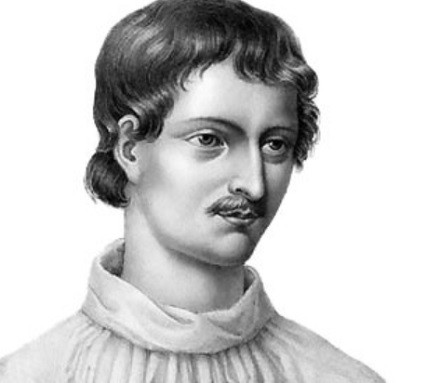
Doctor of theology
His new refuge was France. He received his doctorate in theology from the University of Toulouse and taught during the years 1580 and 1581. He wrote “Clavis magna” and explained Aristotle’s treatise “De Anima”. After several conflicts due to the religious wars of the time and his discordant opinions with practically any religious person, he was accepted by Henry III of France as a professor at the University of Paris in 1581. At this time he published “The Shadows of Ideas” and “The Song of Circe.”
In 1583 he traveled to England when he was appointed secretary of the French ambassador to the country On English soil he would frequently attend the meetings of the poet Philip Sidney and teach the new Copernican cosmology at the University of Oxford, attacking traditional thought. He would end up leaving Oxford after several arguments.
Among his most important writings of this time we find “De umbris idearum” (1582), “The Supper of Ashes”, “On the Infinite Universe and the Worlds”, and “On the Cause, the Beginning and the One” (the three last written in 1584). In 1585 he wrote “The Heroic Furies” in which he describes the path to God through wisdom.
Shortly afterward he returned to Paris with the ambassador and went to Marburg where he gave press to his works written in England. In your new place of residence challenged the followers of Aristotelianism to a public debate at the College of Cambrai He was ridiculed, physically attacked and expelled from the country.
During the following years he lived in several Protestant countries where he wrote many texts in Latin on cosmology, physics, magic and mnemonics. At this time he demonstrated, although by fallacious methods, that the Sun is larger than the Earth.
In 1586 he presented his ideas at the Sorbonne and the College of Cambrai, and taught philosophy at the University of Wittenberg. In 1588 he traveled to Prague where he wrote articles dedicated to the Spanish ambassador, Guillem de Sant Climent, and to Emperor Rudolf II.
He taught some mathematics classes at the University of Helmstedt but had to flee because he was excommunicated by the Lutherans In 1590 he went to the Carmelite convent of Frankfurt and Zurich where he dedicated himself to writing poetry.
Giordano Bruno returned to Italy invited by Giovanni Mocenigo, who would become his protector, and He took up residence in Venice There he would dedicate himself to teaching a private class to Mocenigo.
Process and sentence
On May 21, 1591, Mocenigo, not satisfied with the doctrines of Giordano Bruno and upset by Bruno’s, in his opinion, heretical speeches, denounced him to the Inquisition On May 23, 1592, Giordano was imprisoned and claimed by Rome on September 12. On January 27, 1593, the philosopher was ordered to be confined in the Vatican Palace of the Holy Office.
He spent eight years in prison waiting for the trial in which He was charged with blasphemy, heresy and immorality in addition to having taught his theories about the multiple solar systems and the infinity of the universe.
The process was led by Cardinal Roberto Belarmino, a character who in 1616 would carry out a similar process against Galileo Galilei. Giovanni Mocenigo would also be investigated in this process, accused of heresy when it was discovered that he tried to dominate the minds of others and that Bruno refused to teach him. However, Mocenigo was never arrested.
In 1599, the charges against Bruno were exposed, compiled by Bellarmine and the Dominican Alberto Tragagliolo, general commissioner of the Holy Office. Giordano Bruno decided to reaffirm his ideas, despite the fact that there are records of multiple retraction offers previously rejected. Therefore, on January 20, 1600, Pope Clement VIII ordered that he be brought before the secular authorities.
The charges that were brought against Bruno by the Inquisition are:
All of Giordano Bruno’s works had been investigated during the last decade of the 16th century, giving shape to the entire accusation against him. All of them were censored by the Holy See, and many were burned in St. Peter’s Square.
- Related article: “The 5 ages of History (and their characteristics)”
Execution
At the time, the most common and “civilized” thing was for those convicted of heresy to be first executed and then their bodies burned. This was not the case of Giordano Bruno who, after a sentence of more than eight years, He was burned alive on February 17, 1600 in Campo de’ Fiori, Rome She was 52 years old.
During the process he was stripped naked and tied to a pole. In addition, a wooden vise was stuck to his tongue so that he could not speak. Before being burned at the stake, one of the Catholic monks who accompanied him as executioners offered him a crucifix to kiss, but Bruno rejected it and said that he would die as a martyr and that his soul would ascend with fire to paradise. .
Three centuries later, on June 9, 1889, Giordano Bruno would officially become one of the martyrs of freedom of thought and new ideals
- You may be interested: “Tycho Brahe: biography of this astronomer”
His thoughts and contributions to science
Giordano Bruno believed that the Earth revolved around the Sun and that night and day were the product of our planet rotating on its axis. He also believed that the universe could be infinite by reflecting this quality of God. He claimed that the stars seen in the night sky were actually other suns that they had their own planets, worlds that could well support life like ours.
Bruno claimed that the universe was homogeneous, composed of water, earth, fire and air, and that the stars had no separate quintessence. The same physical laws would be operating everywhere and claimed that space and time were infinite. He believed in atomism and spoke of relative motion.

